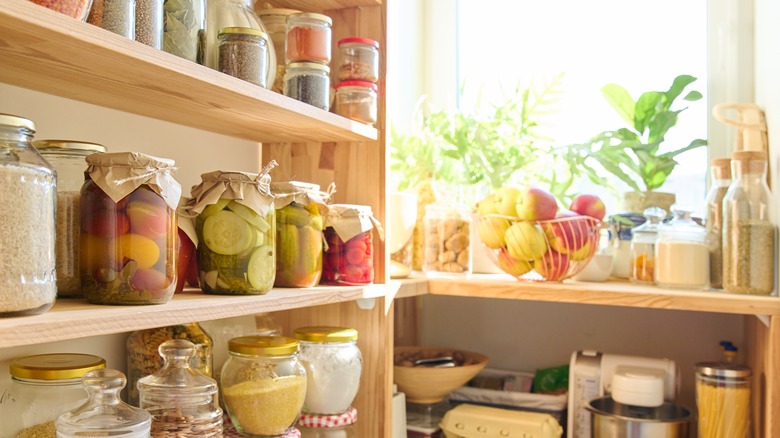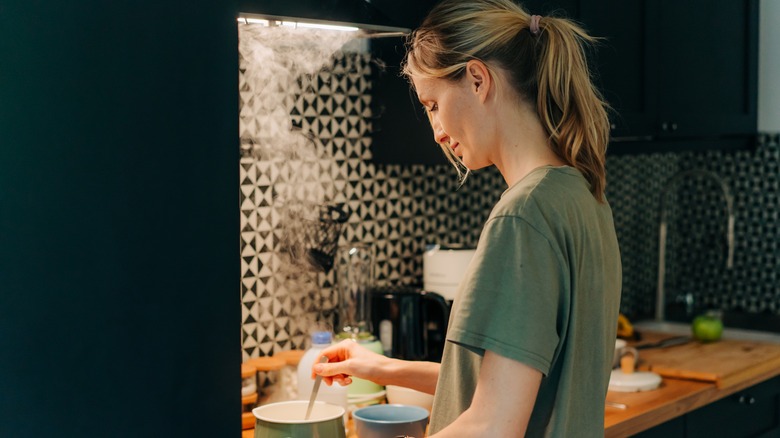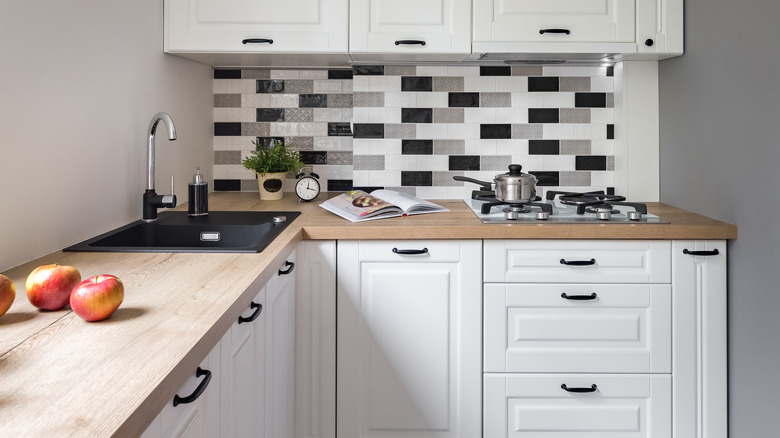The Many Purposes Of A Second, 'Back Kitchen'
We might think of kitchens as a functional part of our homes whose design hasn't changed very much over the last few decades, but House Beautiful begs to differ. Case in point, when kitchens first became a status symbol in the 1950s, it was all about showcasing big, bold appliances. But today, as The Wall Street Journal points out, kitchens have become more minimalistic. Appliances are recessed and tucked away so that they are discreet, and large islands have given way to pared-down table-like extensions.
With kitchens morphing to look less like working kitchens and more like extensions of the living space, it isn't difficult to imagine why, and how the idea of a back kitchen has become appealing to homeowners with room to spare. Back kitchens aren't a new innovation — in fact, they've been around for a very long time — to the days when more affluent homes had butlers, and they were put in charge of keeping watch over household valuables that included silver, crystal, and china. The items the butlers kept watch over were so important to the space, it also doubled up as a sleeping area, according to The Spruce.
A back kitchen can be used as a functioning kitchen
Most of us may not have butlers or heirloom dinner sets to guard, but the concept of a "butler's pantry," which is now known as a "back kitchen" may be less posh than it might first appear to be. The New York Times describes the space as "a pantry on overdrive," where homeowners are able to do the actual prep work and cook, all while keeping the main kitchen clutter and fuss-free. Back kitchens may be going through something of a revival in America, but they are a must-have in many parts of the world, where they are known as a "dirty kitchen."
In Asian countries like the Philippines, these types of kitchens are so essential that it is argued that a "household isn't complete without one," per Experience Kitsap. As Pakistani architect Hashim Mahmood put it, "[A] Dirty kitchen is basically the Hot kitchen where actual cooking takes place, the main kitchen remains neat and cool area, which is just used to show off," according to Medium. American designer Wendy Kuhn agrees, saying, "You've got your main kitchen that is your showpiece and then the other kitchen where the homeowners or caterers can be working behind the scenes" (via St. Louis Magazine).
A back kitchen can be used as a storage and prep area
A back kitchen doesn't just have to be where the cooking happens, because it can also be used as a pantry, a space where you can prep your meals or even an area where you can rustle up a quick snack, per The New York Times. But no matter what you eventually decide to do with the area, design director Richard Moore says you need to keep two things in mind when planning the space.
"Firstly, the aim is to keep unnecessary clutter and mess out of the main kitchen/living zones and the other is that the space must be highly functional," Moore told Homes & Gardens. "Designing for purpose is the key to both considerations. Work out exactly how you will use the room and what you will be storing in it and plan it all out from there, with a generous sink, room for must-have appliances and plenty of dedicated storage."
There is also a need to manage how much you pack into your back kitchen, particularly since things can go awry if too many of the cooking appliances are placed there. While a microwave oven might be perfect, others might become overkill. As architect Cathy Purple Cherry tells The New York Times, "When you bring that stove element to the back, you have to watch out, because it can actually draw you away from the socialization that happens around the kitchen."


